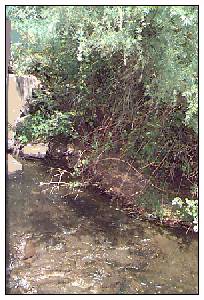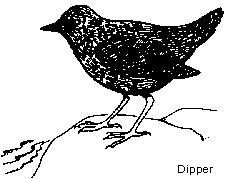 Talent Station 7: A Bridge Over Flooding Water
Talent Station 7: A Bridge Over Flooding Water
BEAR CREEK HAS FLOODED many times in recorded history.The construction of Reeder Reservoir (on Ashland Creek) and Emingrant Lake have helped to reduce some of the potentially damaging floodwaters from entering Bear Creek, but the possibility of flooding still exists. In 1974, heavy rains and rapid snow melt caused Bear Creek to rise to flood level; in 1983, rising waters flowed over this bridge.
The present Bear Creek channel has shifted a considerable distance to the northeast over much of its length. This occurred naturally, with the deposit of soils from the west-feeding streams during floods. It also resulted from agricultural activity, construction of homes and commercial structures, and from channelization of Bear Creek to protect the highways. One impact of this movement has been to bury the evidence of historic and prehistoric cultures under layers of sediment.



















